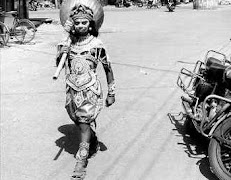Sporadic nesting of a few mother turtles has occurred at Rushikulya rookery coast, while mating of Olive Ridleys in sea near the coast is almost approaching its peak.
Berhampur Divisional Forest Officer (DFO) S.S.Mishra said during past few days more than five mother Olive turtles had reached the Rushikulya rookery coast line to lay eggs. As per experts studying behaviour of these endangered marine turtles, before the mass nesting season at a coast, a few mother turtles come to nest much earlier to assess the condition of the coastline.
“They assess whether the coast is fit for mass nesting or not and pass on the information to other mother turtles in waiting in sea,” Mr Mishra said. Sporadic nesting has occurred at Devi river mouth coast also.
The Rushikulya rookery coast is considered one of the most preferred locations for nesting of these turtles in the world. The lure of this coastline for Olive ridleys can be assessed from the fact that in 2006 there was mass nesting twice of these turtles at Rushikulya rookery coast. In 2013, mass nesting of Olive Ridleys at this coast had displayed another unique phenomenon. On Feb 15 around one lakh of these endangered marine turtles preferred to lay eggs during day. Usually these turtles prefer to have their mass nesting in the dead of night. In 2013 nesting season around three lakh Olive Ridleys had nested at this coast. As per the data, the mating season of Olive Ridleys reaches its peak between Jan 10 and 15. At present thousands of these turtles are involved in lovemaking in the sea at distance of around 10 km. The number of mating turtles is on a par with last year which hints that this year there may be a high rate of mass nesting at this coast.
 The Forest Department has initiated measures for protection of these turtles through strict vigil to check illegal entry of trawlers. Officials continuing patrolling by boat in sea with support of State fisheries department. There are nine camps of forest department on the coast where Olive ridleys nest.
The Forest Department has initiated measures for protection of these turtles through strict vigil to check illegal entry of trawlers. Officials continuing patrolling by boat in sea with support of State fisheries department. There are nine camps of forest department on the coast where Olive ridleys nest.
Till now carcasses of around 150 Olive Ridleys have floated to this coast. But their state of decomposition hinted that they had died several weeks ago and their carcasses had floated to the coast by the sea waves and wind. After mating the male turtles return and the females stay back near the coast. Mass nesting starts in the second week of February. The mother Olive Ridleys also return to the sea after laying eggs in holes dug up by them in the sand. Source: The Hindu


















.jpg)


















































No comments:
Post a Comment